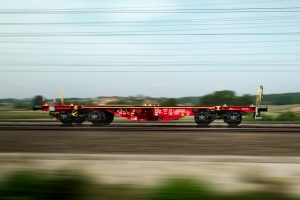
Rail Cargo Group and voestalpine have signed a contract for a joint construction planning, pilot production and the transition to serial production of TransANT wagon.
According to the agreement, the companies establish a joint venture with each partner owing 50% stake in this project.
The two companies will start the activities beginning with a preparatory phase for planning, project management and establishing contacts with potential customers of the innovative freight wagon concept they created together.
Since 2018, work has been ongoing to manufacture the TransANT range with the first prototypes being sent to customers for test runs. The experts of ÖBB, voestalpine and voestalpine’s logistics subsidiary Logserv have partnered to implement the project. The first 60 freight wagons from the TransANT product range have been successfully and efficiently transporting domestic ore for voestalpine since autumn 2019.
TransANT wagon is a innovative modular platform concept that make possible to load greater freight volumes due to its flexible superstructure that can be customised to meet every individual logistics requirements. Wagon’s flexibility in construction and operation offers a smart interface between the body and wagon, enabling marshaling hump capacity.
 It is an innovative wagon with a 20% lighter underframe allowing increased payload of up to 4 tonnes providing increased capacity while reducing the number of the wagons needed. Compared to a 7.3-tonne standard wagon the TransANT is 5.6 tonnes (-23%). The platform wagon will be available in different lengths (between 33 ft and 70 ft), while stems, consisting of headpiece and main crossbeam, are identical in all versions. This enables modular production and semi-automated manufacturing. In addition, short investment cycles and the innovative technology such as central buffer coupler make TransANT sustainably attractive.
It is an innovative wagon with a 20% lighter underframe allowing increased payload of up to 4 tonnes providing increased capacity while reducing the number of the wagons needed. Compared to a 7.3-tonne standard wagon the TransANT is 5.6 tonnes (-23%). The platform wagon will be available in different lengths (between 33 ft and 70 ft), while stems, consisting of headpiece and main crossbeam, are identical in all versions. This enables modular production and semi-automated manufacturing. In addition, short investment cycles and the innovative technology such as central buffer coupler make TransANT sustainably attractive.
By manufacturing the new wagon, the two companies set new standards in the rail logistics industry in terms of flexibility and modularity, as well as a new benchmark on the freight transport market.
Share on:



